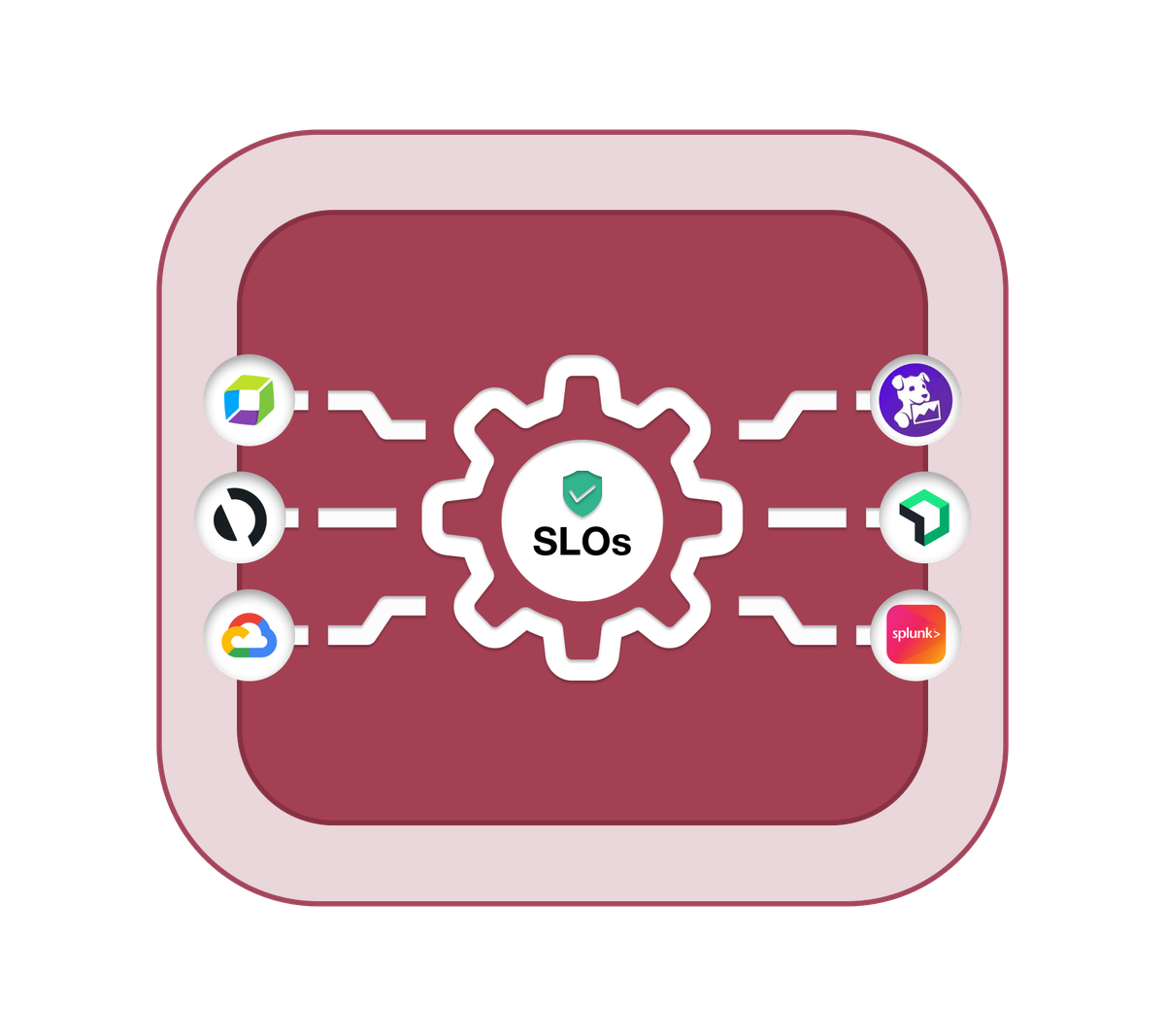In the last few blogs Incident Response: How SRE (Site Reliability Engineers) Teams Keep the Digital Ship Afloat,The Watchful Eye: How Monitoring Powers the World of Site Reliability Engineering ,Enhancing Site Reliability Engineering (SRE) with Automation,Understanding Site Reliability Engineering (SRE): SRE 101 I wrote as part of my SRE 101 series, I discussed various aspects of Site Reliability Engineering (SRE) that affect SRE teams. Service Level Objectives (SLOs) are an important part of ensuring the best performance and reliability of systems. The efficiency and dependability of systems are crucial for delivering a top-notch user experience and accomplishing business goals. Site Reliability Engineering (SRE) teams play a pivotal role in this mission, precisely outlining Service Level Objectives (SLOs) to set up precise targets for system performance and reliability. By harmonizing these objectives with business goals and user requirements, SRE teams ensure that systems function within predetermined parameters, balancing performance, reliability, and business prosperity.
Understanding the Significance of SLOs in Modern Operations
In the fast-paced world of modern operations, Service Level Objectives (SLOs) play a vital role in setting the standards for system performance and reliability. Think of SLOs as the guiding principles ensuring a ship's safe passage through turbulent waters. These objectives are akin to a meticulously mapped route, marking specific checkpoints and milestones that the ship must reach for a successful journey. For example, in the context of an e-commerce platform, an SLO (service level objectives) might specify that 99.9% of all transactions must be processed within 2 seconds to maintain a satisfactory user experience. This target serves as a guide for the technical team, signifying the expected threshold for response times, which directly affects the satisfaction of online shoppers. By setting up such precise and measurable goals, the SRE team can focus their efforts on streamlining the checkout process, strengthening server capacity, and perfecting database performance. This ensures that customers can swiftly complete their purchases without unnecessary delays.
Aligning SLOs with Business Objectives
To ensure the effectiveness of Service Level Objectives (SLOs), it is crucial for SRE teams to seamlessly align them with the overarching goals of the business. Consider a cloud-based e-commerce platform aiming to expand its market share by providing an exceptional user experience. The SRE team, in close collaboration with the marketing and product development departments, must recognize that the platform's responsiveness and uptime directly affect customer satisfaction and so-sales revenue. By incorporating this understanding into the SLOs, the team can set up specific targets for response times and system availability that directly contribute to the platform's business goals. This seamless alignment ensures that technical performance supports the broader goal of enhancing the user experience, resulting in increased customer satisfaction, repeat business and the accomplishment of the company's market expansion aims. This comprehensive alignment promotes a cohesive approach where technical excellence intertwines with the platform's commercial success, laying the groundwork for a more resilient and sustainable operational structure.
Addressing User Needs through Thoughtful SLO Formulation
Addressing User Needs through Thoughtful SLO Formulation entails a thorough understanding of user expectations and preferences, which significantly shape the design and implementation of Service Level Objectives (SLOs). Consider an e-commerce platform that prides itself on delivering a seamless shopping experience. The SRE team is responsible for supporting the platform's performance and reliability and conducting comprehensive user research, including analyzing browsing patterns, purchase histories, and customer feedback.
Through this analysis, the SRE team identifies that customers consistently abandon their shopping carts during the payment process, leading to a significant drop in the platform's conversion rates. Further investigation reveals that the slow loading time of the payment gateway is a major deterrent, causing frustration among users and discouraging them from completing their purchases. In response, the SRE team revises the SLOs to include a specific target for the maximum acceptable loading time for the payment gateway.
By incorporating this revised SLO, the team aims to ensure that the payment gateway consistently meets the defined performance benchmark, thereby enhancing the overall user experience and boosting the platform's conversion rates. This strategic adjustment shows how SRE teams, by aligning SLOs with user needs, not only address technical aspects of system performance but also directly tackle pain points that impact user satisfaction and the platform's bottom line. Such user-centric SLO formulation underscores the critical role of SRE teams in fostering a digital environment that not only meets technical standards but also prioritizes the seamless experience of end-users.
Continuous Monitoring and Adjustment for Optimal Results
To illustrate the importance of continuous monitoring and adjustment in keeping Service Level Objectives (SLOs), consider a popular e-commerce platform that aims to ensure an exceptional user experience during peak shopping seasons. Suppose the SLO for this platform dictates that the average response time for loading product pages should not exceed 2 seconds, and the error rate should be kept below 0.5% during all user interactions.
During the holiday season, the platform experiences a sudden surge in traffic, leading to a noticeable slowdown in page loading times and a slight increase in error rates. The SRE team, equipped with advanced monitoring tools, immediately detects these deviations from the established SLOs. By analyzing the real-time data, they pinpoint the underlying causes of the slowdown, which could be attributed to increased server load or a temporary network bottleneck.
The team promptly starts necessary adjustments, such as scaling up the server capacity and perfecting network resources, to address the issues and restore the platform's performance to meet the predefined SLOs. As the holiday rush continues, the SRE team closely watches the system's performance, making real-time adjustments as needed to ensure that the response times are still within the targeted 2-second threshold and the error rates stay below 0.5%.
This iterative approach of continuous monitoring and adjustment not only enables the e-commerce platform to support a seamless user experience during peak periods but also ensures that the SRE team still is responsive to the dynamic demands of the business and the evolving expectations of the users. By proactively managing fluctuations in system performance and swiftly implementing necessary modifications, the SRE team successfully upholds the established SLOs, solidifying the platform's reputation for reliability and efficiency even in the face of heightened operational challenges.
The Role of SLOs in Promoting Organizational Accountability and Collaboration
Service Level Objectives (SLOs) are more than just numerical targets; they are integral to cultivating a culture of accountability and collaboration within an organization. Consider an example from the e-commerce industry, where an e-commerce company has set up an SLO to support a 99.9% website uptime. This SLO, while a technical metric, directly aligns with the organization's primary business goal of supplying a seamless online shopping experience to its customers.
In this scenario, the SRE teams and other cross-functional departments like development, customer support, and marketing come together. They all recognize that the achievement of the 99.9% uptime SLO is crucial for ensuring that customers can browse, shop, and make transactions on the website without disruptions.
With this shared understanding, every team plays a role in upholding the SLO. The development team focuses on writing efficient code that minimizes the chances of system outages. The customer support team works to quickly address any customer-reported issues to prevent downtime. The marketing team collaborates to plan campaigns and updates during non-peak hours to minimize disruptions.
By having the SLO as a common goal, these teams are not only accountable for their specific functions but also for the collective goal of supporting high website uptime. They communicate regularly, sharing insights and working together to address potential issues before they affect the end-user experience.
This collective commitment fosters a collaborative environment where teams recognize that their efforts are interconnected. By perfecting system performance and reliability to meet the SLO, they contribute directly to the organization's overall success. The company gains a reputation for a reliable online platform, which, in turn, attracts and keeps more customers, thus increasing revenue.
In this way, the SLO serves as a unifying force that aligns technical excellence with the broader business aims. It promotes not only accountability within individual teams but also collaboration across the organization, resulting in an improved user experience, greater customer satisfaction, and the achievement of the company's overarching goals.
Conclusion
The establishment of clear and well-defined Service Level Objectives (SLOs) serves as a critical linchpin in supporting the delicate equilibrium between system performance, reliability, and the overarching goals of the business. For instance, consider a cloud-based service provider aiming to guarantee 99.99% uptime to its customers. By aligning their SLOs with this specific business goal, the SRE teams can meticulously watch and perfect the service's performance, ensuring minimal downtime and uninterrupted service for end-users. This commitment to meeting the uptime target not only enhances user satisfaction but also reinforces the provider's reputation for reliability, fostering customer loyalty and bolstering the company's market position. As technology advances and user demands evolve, SRE teams must continually refine their SLOs, adapting to the shifting technological landscape and emerging challenges. This adaptability is crucial in solidifying the SRE teams' role as the key architects of digital excellence and reliability, enabling them to proactively steer their organizations toward continued success and growth.

